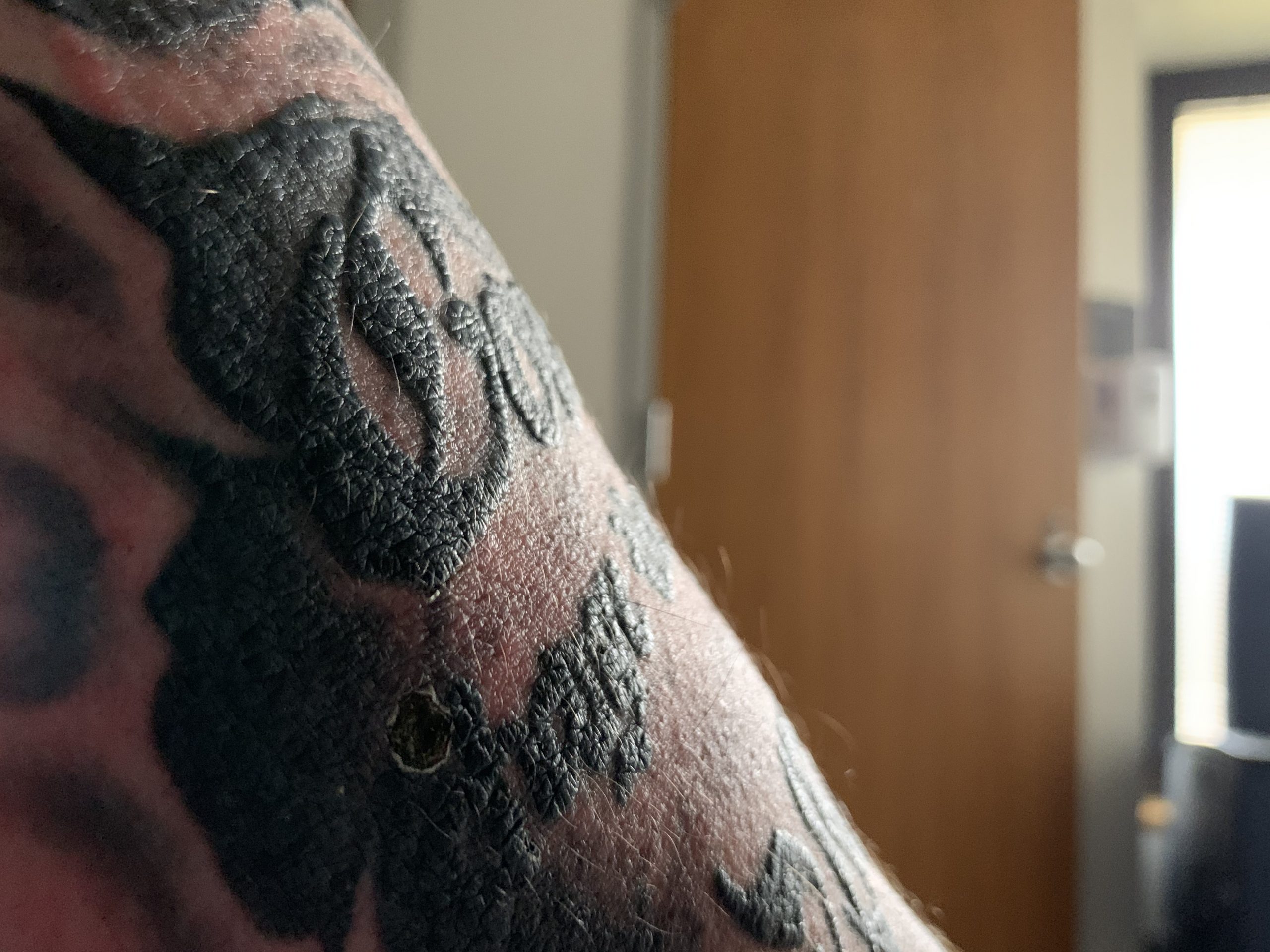Case Presentation: A 24-year-old man with a history of relapsing juvenile dermatomyositis inactive for five years presented with one week of anosmia, dysgeusia, and rash. He also had fatigue and myalgias but no fevers, cough, or dyspnea. His exam was notable for a diffuse maculopapular rash with occasional crusted papules on the proximal upper and lower extremities as well as abdominal linear, violaceous stria. They were pruritic with blanching erythema and were distributed on sun-protected areas of the skin. Interestingly, a well-established, five-year-old tattoo on his arm developed spontaneous dermographia. His labs revealed positive PCR swab for SARS-Cov-2, mildly elevated CPK to 900 and mildly elevated AST and ALT; the remainder of his labs, including Covid-19 and myositis-related inflammatory markers, were normal. The rheumatology and dermatology services evaluated for a possible dermatomyositis reactivation but the rash and dermographism were ultimately attributed to an exanthem caused by SARS-Cov-2 virus. His LFTs and CPK levels normalized over the next 24 hours, he demonstrated no further progression of his Covid-19 symptoms, and he was discharged. At six weeks follow up, the lesions over the sun-protected areas had resolved, but he had interval development of new photo-distributed erythematous poikiloderma with heliotrope, progressive fatigue, and CPK re-elevation. He was subsequently confirmed with a dermatomyositis flair in rheumatology clinic and started on an immunosuppressive regimen; he remains well.
Discussion: Viral exanthems are a common manifestation associated with many viral illnesses. Unlike other beta-coronavirus infections which are not typically associated with dermatologic manifestations, SARS-Cov-2 virus is frequently associated with cutaneous phenomena. Case definitions and terms are not yet formalized at this early point in the pandemic which makes diagnostic description a challenge. Recently, classification schemes have been proposed for the cutaneous manifestations of Covid-19: pseudo-chilblain, vesicular, urticarial, maculopapular, and livedo or necrosis. We describe a unique urticarial manifestation of SARS-Cov-2 presenting with a mixed, diffuse urticarial and vesicular rash which included the unexpected dermographic outline of a well-established tattoo. In the Covid-19 pandemic, hospitalists have faced a sudden influx of patients with a new and ill-defined disease manifesting in wide-ranging way while simultaneously still managing advanced presentations of underlying diseases processes. Facilitation of rapid collaboration between consultants and a keen awareness of contrasts between the wide spectrum of Covid-19 presentations and the nuances of rare but important diseases and has remained integral to reducing excess mortality. Here, careful recognition of the differences between Covid-19 and dermatomyositis-related features were crucial in determining the optimal course of treatment. Indeed, the strain of the pandemic system surge and the decision to initiate immunosuppression could have had severe consequences if misidentified as dermatomyositis.
Conclusions: This patient had three of five different types of Covid-19 skin eruptions with a heretofore unreported dermographism due to Covid-19. Moreover, it highlights the utility of hospitalists in diagnostic discernment, expeditious collaboration, and coordination to relieve acute stress on the health system while maintaining a high standard of care.

